No Pampering in the Pampas
One hour by plane or 16, bathroom deprived, hours by bus... hmmm, choices, choices?
This particular choice was rather simple for kidney dependent travelers. We left just after sunrise from La Paz in a small but sufficiently powered twin-engine prop-plane. The funny part of the navigational path is that we didn't even clear the summit of Huayna Potosi. In fact we skirted off in a valley to the right, avoiding the need to gain altitude over any of the local peaks.
The terrain is almost mystical, approaching the town of Rurrenabaque. The pilot zipped through descending valleys to a verdant cliff, over which the lushness of jungle covered the horizon. The transition from muted greys and whites, of high altitude environs, to the rich green and dark browns of the Amazon Basin transpired over a single ridge line.
Then, a moment for the dramatic, was our grass field landing. A "fly by" showed that the strip was clear, then the pilot lined up and gently set the plane down over as long and gentle an approach as I've witnessed. Maybe he was attempting to minimize the lumpy surface by gradually settling down. If there is any rain, then the airport is closed until the mud dries. Given this is a rain forest, we were exceptionally lucky to have a perfectly clear and beautiful morning.
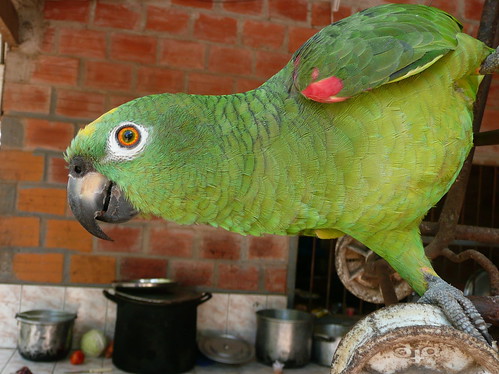
Another hour down the road and we were there, where ever "there" was. The continuing parallel between the Southeast Asian peninsula and the Amazon Basin persisted with very similar housing construction methods.
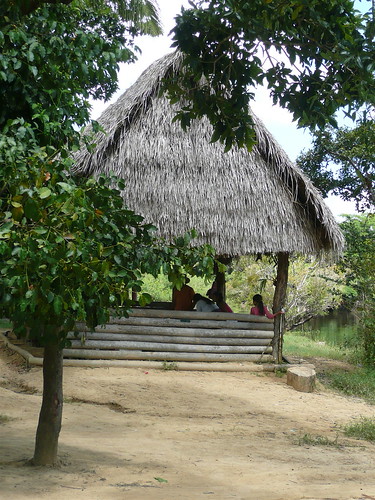

Thankfully, we parted ways, with our guide taking the advantage opportunity of skimming ahead to put some distance between. This way, we might be able to catch glimpses of more sound averse creatures, which might be intimidated by the cackling gaggle of Middle Eastern morons. Why do they bother to come to a pristine ecosystem if they just want to party and destroy it? Thankfully, as the gap widened our fauna sightings increased, starting with this river turtle.
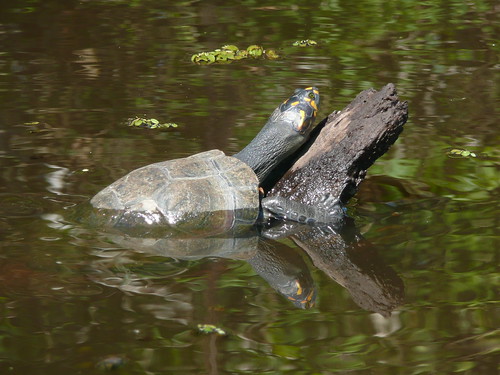
Bolivians can be strict in their protocol, even in the tiniest of airports. We found it a little comical, and joked about feeling "safe" after seeing the sole contents of the local fire management team resting in the plane's shadow.
Rurrenabaque is "jungle quaint", reminding me of parts of Cambodia. We even noticed that some of the people we remarkably "Thai" in their physical appearance. The sustenance of the town's economy is Eco-Tourism. Each day, a veritable fluvial flood of gringos arrives via three direct flights and several buses.
Tourists attract characters of all shades. This American transplant has been selling baked goods, while handing out tracts, for the last fifteen years. His prices would have been right at home in the States and the good thing was that the quality actually matched the investment.
Our general rule of thumb has been to do business with the oldest and most recommended companies, when there are questions of safety. This puts us on the slightly more expensive track, which can have the added benefit of eliminating "buzz kill" trekkers and our least favorite Israeli hoards.
Sometimes, more established isn't always better, as it may also mean getting the oldest equipment. So we headed off to the Rio Madidi with a four hour excursion in a questionably ancient Toyota Land Cruiser, which needed somewhat frequent cooling/watering breaks. To add to the fun, our driver was a prototypical Bolivian driver who took to driving on the wrong side of the road. When an oncoming vehicle made its way up the two-lane dirt road, he would wait to the last moment and make a dash for the right side, before righting the lumbering truck back to the left hand lane. We were all a little bewildered.
Thankfully, the group stopped for lunch about three hours into the journey, providing the opportunity for our aching backs to recover somewhat from the bench seats, set on the cargo bed, facing each other in "1940's safari style".
It felt like the movie "Biloxi Blues", when Mathew Broderick's character said, "Its hot. Its Africa hot. Its Tarzan hot. Its hot, hot!" The sweat was a constant flushing of fluids, so good thing the first course of lunch was a piping hot bowl of soups... haaa. Actually, I liked it and piled my rice and bit of chicken into the bowl for flavor. On the way to the bathroom, this little fella happily greeted all passers by. His spirit gave a needed boost, as he seemed to smile with his enthusiasm.

Another hour down the road and we were there, where ever "there" was. The continuing parallel between the Southeast Asian peninsula and the Amazon Basin persisted with very similar housing construction methods.

The boat on the left was ours for the taking. Only one thing was missing, preventing a successful launch, our motor. It seems the company only had one motor and the other boat was still heading up river to drop off the previous travelers. So we waited and waited, as literally over a hundred obnoxious Israeli trekkers piled into canoes and took off with their less expensive guides (insult to injury). As an aside, these canoes are still constructed traditionally from a single tree hull, which has been hand carved and burned out, then reinforced with more tourist friendly gunwales/side boards.
After another hour, we were finally, patiently, on our way. At the time this unexplained truancy was taxing, but the group decidedly opted for a positive experience and set aside reservations once under way. The back story to all this was that a previous group had gotten stranded on the river for 14 hours when the other motor broke-down. So, our minor delay paled in comparison to their very real headache. (Yes, luggage does get wet and the humus dense water leaves an irrevocable stench... one of my dampened shoes will never smell the same again.)
Quickly, the river level vistas off of brown reflective current, matched with lush undergrowth, soaring trees, and amazing cumulus clouds wiped any logistical frustration from our minds.
The Amazon Basin is famous for many unique creatures and the prize here is the fresh water pink dolphin. Do you see him? These mammals are extremely difficult to catch on film, with visible surface breathing only taking a fraction of a moment. The optical challenge is that the water is so darkly dense with decomposing materials that it resembles a nice pint of Guinness more than the clarity of a local swimming pool. So, by the time a pink dolphin blow is heard, one must turn, point, and shoot, with the hope that just maybe there will be a photographic glimpse.
Who's a lucky photographer? I guessed where this pair may surface and almost missed the opportunity in amazement. If you haven't read the blog entries back in Patagonia, you may be wondering why I'm so hard on the Israeli travelers. Well, here is another perfect case in point. Beyond be self-centered, loud, and completely inconsiderate to locals, they were inexcusably obtuse when it came to the environmental preservation. These malignant savants smoke where ever they go and thought it a pretty amusing game to flick their spent cigarette butts at the pink dolphins. This was so unbelievably obtuse I could hardly contain the frustrated rage.

Thankfully, we parted ways, with our guide taking the advantage opportunity of skimming ahead to put some distance between. This way, we might be able to catch glimpses of more sound averse creatures, which might be intimidated by the cackling gaggle of Middle Eastern morons. Why do they bother to come to a pristine ecosystem if they just want to party and destroy it? Thankfully, as the gap widened our fauna sightings increased, starting with this river turtle.

The Madidi National Park is known for biodiversity, especial avian. (Unfortunately, I can't remember the name of this tree top dweller, with the majestic cranial crest of plumage.)
Blue herons searched for fish near the water's edge or for each other in the bush tops.
A white headed eagle was a prized find, as there isn't much tolerance for intrusion, so the picture had to be taken from over 100 yards. (Ergo, blurring.)
A Snail Hawk was one of my favorite flying predators. Fluffy grey feathers, combined with deep red eyes made for quite an impression.
A pre-historic bird loves these swamps. (I guess all birds qualify as technically pre-historic but this one leaps deepest into the fossil record.) The brilliant coloring reminds me of the Australian Cassowary, another dinosaur era bird.
Then there was the king of evolutionary developmental history, next to the cockroach of course, the alligator. There always seemed to be at least one pair of eyes keeping track of movements on the river.
Our boat was comfortably filled, with Lipika and me ...
... our own male duo of Israeli travelers, with a pair of English adventures in the bow, and ...
... a lone Frenchman in the back with the guide.
Enormous trees occasionally line the river banks, providing perch points and dominant visual interest.
But, what is even more fun is the mid-level trees and bushes, because they are home to boisterous Howler Monkeys. Their audible grunting expectorant thunders across the swampy lowlands. As much as howlers are heard, they are oppositely seen. So, it was fun to catch a few fleeting glimpses.
Squirrel monkeys are much smaller than howlers and complete extroverts, when it comes to eagerly gobbling up free bananas. Check out their little fingers. It is amazing how perfect they are. Creation is a pretty cool thing.
Ah... home for the next couple of nights. There are mini-rooms with twin cots, complete with scrim mosquito nets and even showers of freshly pumped river water. What ever the ambient temperature, simply add seven to ten degrees to get the mosquito protected bed climate. At night, I couldn't stop sweating, even after a pool of dampness soaked through the sheet and oozed between me and the plastic coated mattress.
After getting "settled in" there was time for a quick lounge in one of the several hammocks. The shade/indirect light brought slight relief to the hundred plus degree heat, redoubled with indigenous humidity levels.
A clammer of clapping beaks overhead kept interrupting our conversations. As it turns out, a pair of storks were nesting (among other things) about ten meters above our heads. Each would swoop across the pampas to collect more nest fodder, then the clapping and commotion would start up again. (The keen observer might notice the source of avian adulation below.)
Our guide was the "Rico Suave" of the Bolivian water ways, although there was some speculation as to which side of the river he motor his canoe. Of course that was ultimately a non-issue for our quality of tour, but some speculated how difficult it must be in this macho-centric environment.
The evening destination was a group gathering point, cum sunset viewing station and bar. As it turns out, the various camps convene in the evenings for a literal social hour around sunset.
This particular venue lauded cold beer (luke-warm but tasty none-the-less) and a perilous plank walk, lined with multi-national flags stations. The scaffolding teetered with just Lipika and me balancing along the stanchions. There was no way we were going to risk this event with 100 of our closest Israeli travelers.
About thirty people stood, balanced, and sat to watch the sunset from the rickety structure, while an alligator waited below for a catastrophic nibble. (Note the eyes in the water below.) Unfortunately, still reeling from the cigarette flicking incident our motives weren't exactly pure in which direction we were leaning.
Well, nothing actually happened except a few wabble and acohol induced staggers. So to end the day on a good note, we all enjoyed the sunset and hoped for a nocturnal cooling spell, which never came.
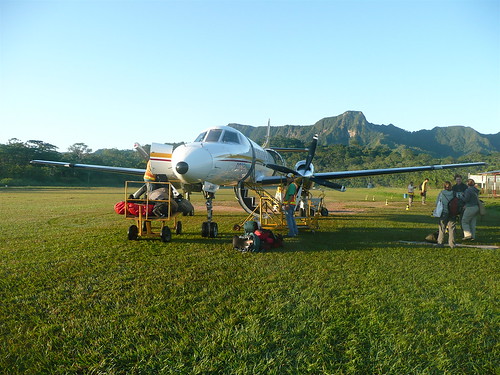
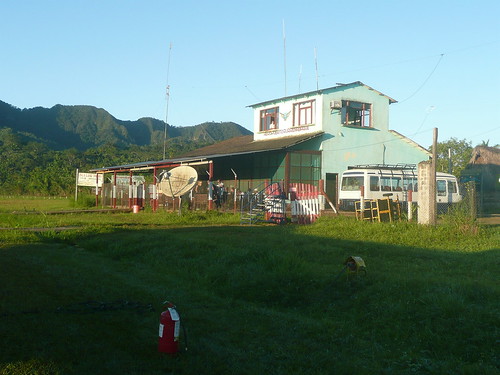
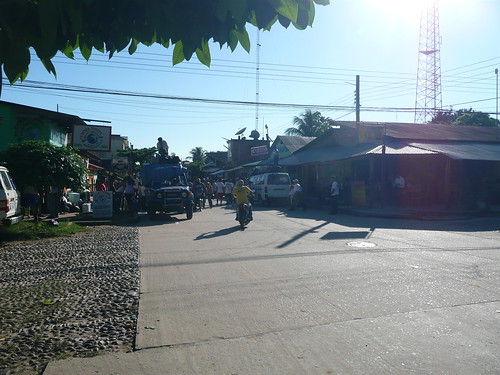
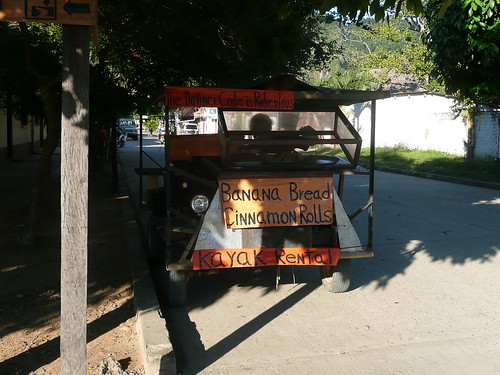
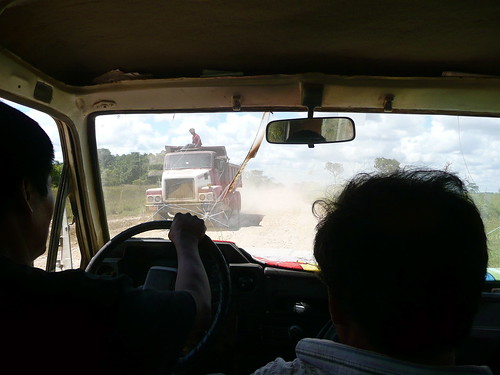
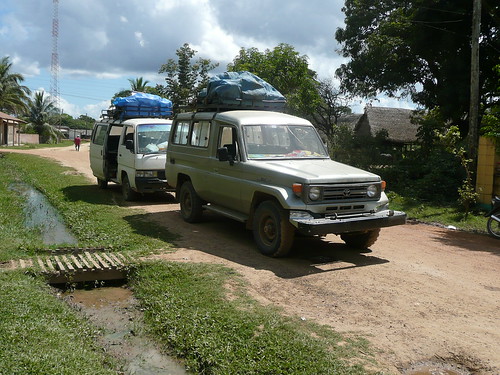
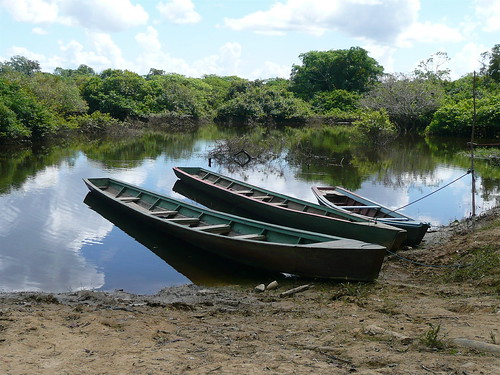
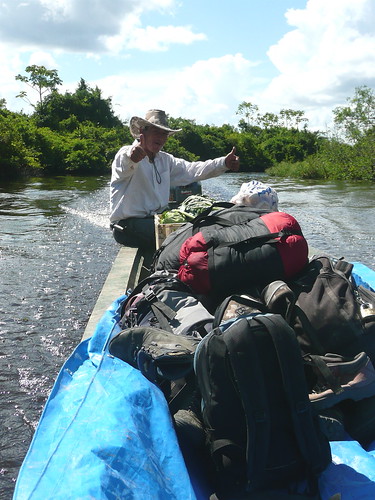
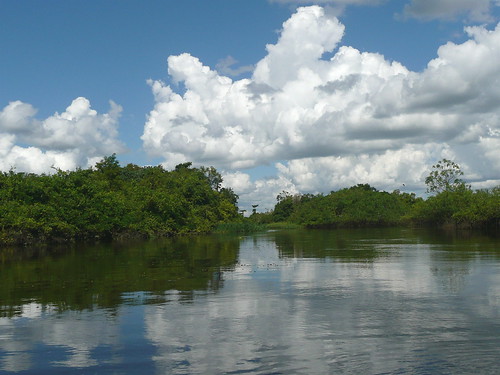
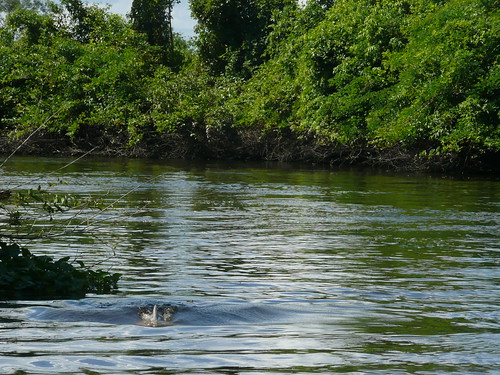
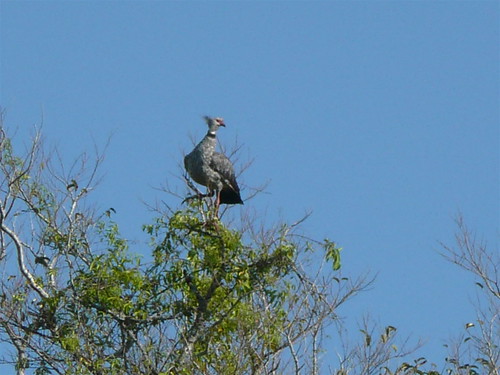
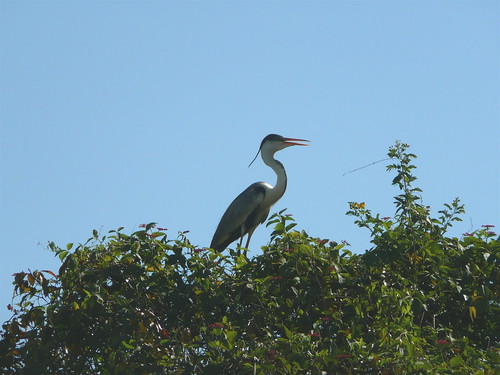
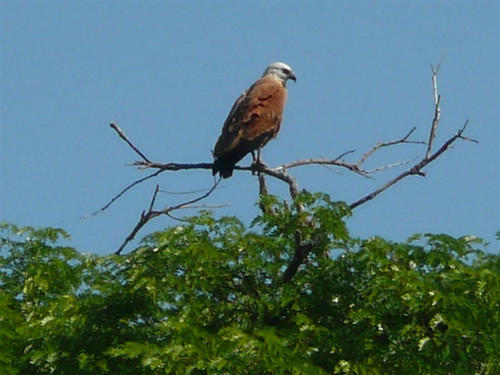
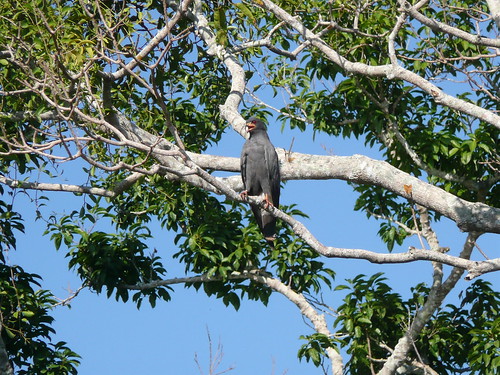
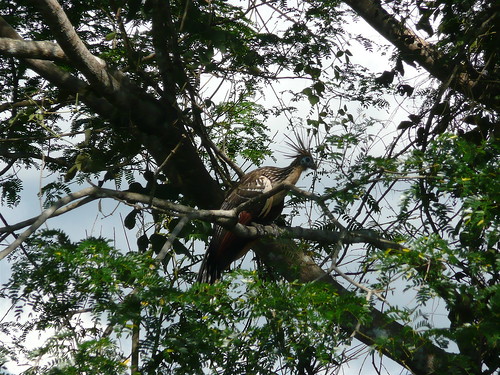

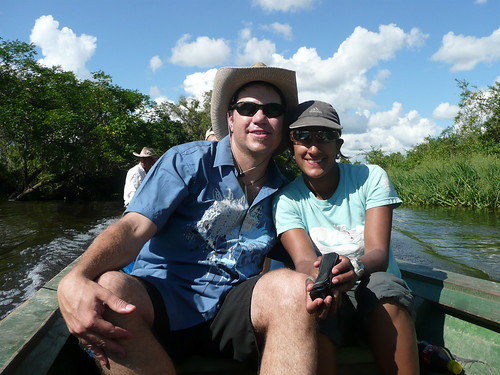
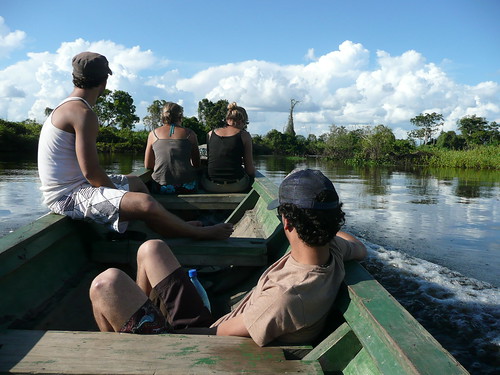
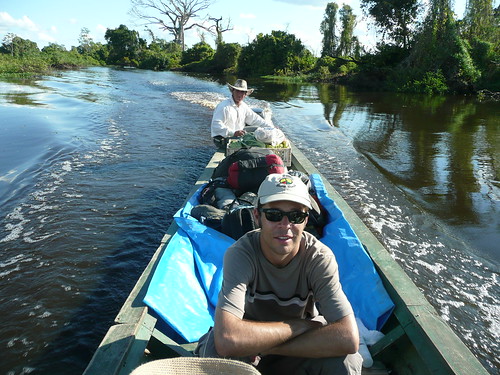

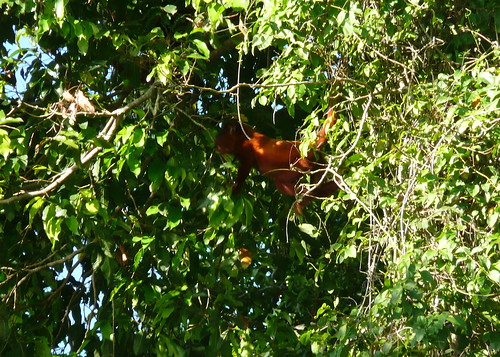
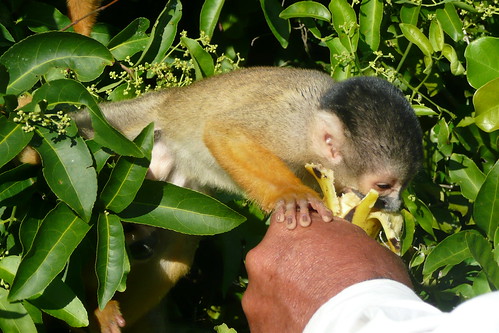
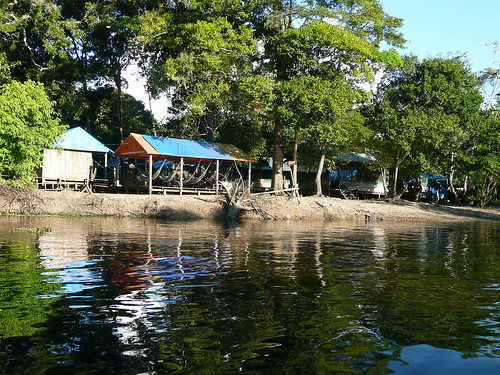
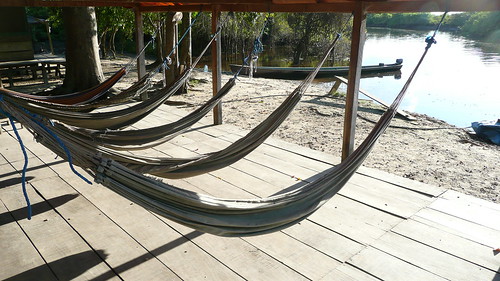
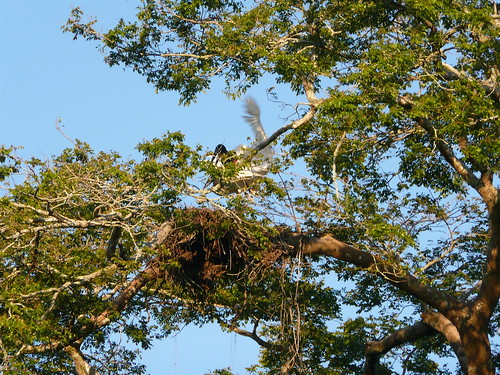
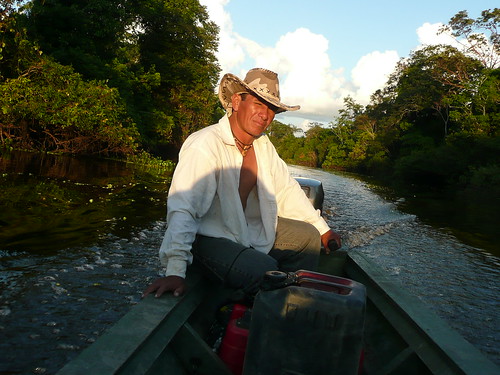

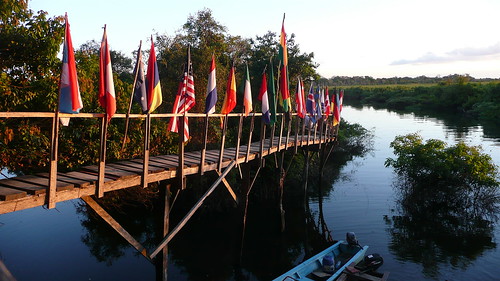
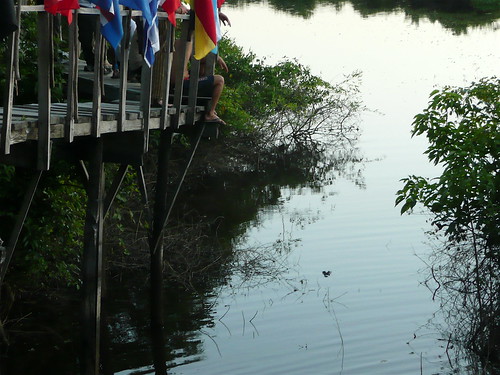
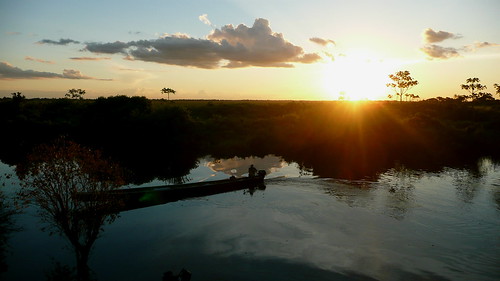
No comments:
Post a Comment